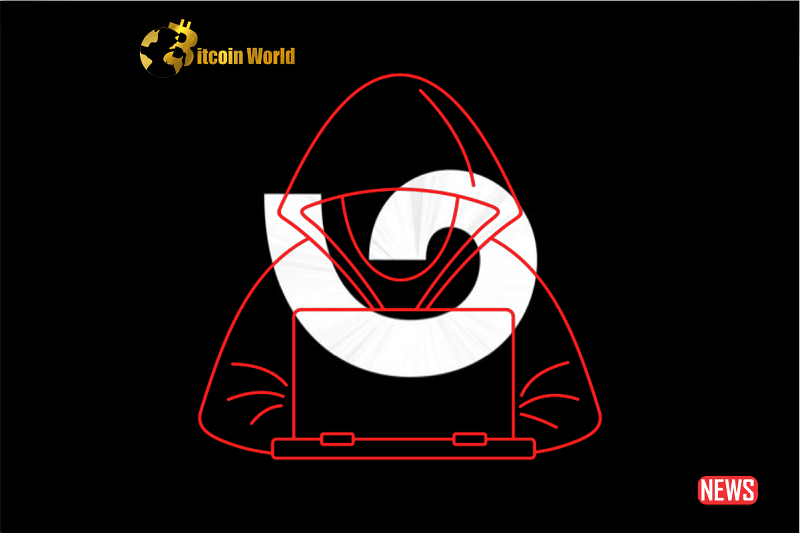The DeFi world never sleeps, and unfortunately, neither do the bad actors. Over the weekend, Zunami Protocol, a platform known for its stablecoin yield farming, became the latest victim of a sophisticated attack, losing over $2.1 million. This incident, targeting their liquidity pool on Curve Finance, serves as yet another stark reminder of the persistent security challenges within decentralized finance. Let’s dive into what happened and what it means for the DeFi space.
What Exactly Happened to Zunami Protocol?
Think of Zunami Protocol as a hub for maximizing returns on your stablecoin holdings. They operate as a decentralized autonomous organization (DAO), and their main liquidity pool, “zStables,” resides on Curve Finance. This pool facilitates the smooth exchange of stablecoins on the Ethereum network. With a hefty $5 million in total value locked (TVL) and promising attractive annual percentage yields (APY), Zunami had carved out a significant space for itself.
The Anatomy of the Attack: A Flash Loan Frenzy
So, how did the hackers pull this off? As seasoned blockchain observers might guess, it involved a clever manipulation using a flash loan. Here’s a breakdown:
- Flash Loan Initiation: The attacker took out a flash loan from Balancer. The beauty (and danger) of flash loans is that you can borrow significant amounts of cryptocurrency without collateral, as long as you repay it within the same transaction block.
- Price Manipulation: With the borrowed funds, the attacker injected liquidity into Zunami’s pool on Curve Finance. This influx of capital allowed them to temporarily inflate the price of certain assets within the pool.
- The Exploit: Taking advantage of the artificially inflated prices, the attacker executed trades that drained the pool of its assets. Essentially, they bought low (at the real price) and sold high (at the manipulated price) within the same transaction.
- The Getaway: The attacker pocketed a significant amount of ETH – 1,152 ETH to be precise – before repaying the flash loan. Blockchain security firm Ironblocks aptly described this as “classic price manipulation.”
The Immediate Aftermath: Token Values Plummet
The impact of the attack was swift and severe. Here’s a look at the immediate consequences:
- Significant Losses: PeckShield, another blockchain security firm that quickly identified the breach, confirmed losses exceeding $2.1 million across two transactions.
- Token Price Crash: The Zunami USD stablecoin (UZD) experienced a dramatic drop of over 99%. Imagine the shock for holders!
- zETH Takes a Hit: Zunami Ether (zETH) wasn’t spared either, plummeting by 88% to a value of around $206.
Zunami’s Response: Damage Control and Investigation
How did Zunami Protocol react to this crisis? Here’s what we know:
- Swift Communication: Zunami took to Twitter to acknowledge the attack and reassure their community that collateral remained secure.
- Investigation Underway: The protocol confirmed that an investigation is in progress to understand the full extent of the exploit and how to prevent future incidents.
- User Advisory: As a precaution, Zunami advised users to refrain from purchasing zETH and UZD tokens, the primary targets of the attack.
Where Did the Stolen Funds Go? The Tornado Cash Connection
Unfortunately, a common tactic among crypto hackers is to obscure the movement of stolen funds. In this case, reports indicate that the pilfered ETH was laundered through Tornado Cash, a controversial coin mixer that makes it difficult to trace transactions. This highlights the ongoing debate surrounding privacy and illicit activities in the crypto space.
Curve Finance: A Recurring Target
This incident adds to the woes of Curve Finance, which has been grappling with a series of attacks recently. They are still working to recover approximately $19 million stolen in a previous hack. In response, Curve has even offered a substantial $1.8 million bounty for information leading to the identification of the perpetrator. These repeated breaches underscore the vulnerabilities that persist within even well-established DeFi platforms.
What Does This Mean for the Future of DeFi Security?
The Zunami Protocol hack, alongside other recent incidents, raises critical questions about the security of the DeFi ecosystem. What can be learned from this?
Challenges Highlighted:
- Flash Loan Exploits: The power of flash loans, while innovative, can be weaponized for price manipulation.
- Smart Contract Vulnerabilities: Even with audits, vulnerabilities can exist in smart contracts, providing attack vectors.
- The Need for Constant Vigilance: The DeFi landscape is constantly evolving, requiring continuous monitoring and adaptation of security measures.
Actionable Insights:
- Enhanced Audits: More rigorous and frequent smart contract audits are crucial.
- Real-time Monitoring: Platforms need robust systems to detect and respond to suspicious activity in real-time.
- Community Awareness: Users need to be educated about the risks involved and how to identify potential red flags.
- Collaboration is Key: Security firms, protocols, and the wider community need to collaborate to share threat intelligence and develop best practices.
Conclusion: A Call for Stronger Defenses
The Zunami Protocol hack is a sobering reminder that while DeFi offers exciting opportunities, it also comes with inherent risks. The sophistication of these attacks is increasing, demanding a constant evolution in security measures. For the DeFi space to truly thrive, robust security protocols, proactive threat detection, and a vigilant community are not just recommended – they are essential. The ongoing challenges faced by platforms like Curve Finance and now Zunami Protocol highlight the urgent need for stronger defenses and a collective commitment to safeguarding the future of decentralized finance.
Disclaimer: The information provided is not trading advice, Bitcoinworld.co.in holds no liability for any investments made based on the information provided on this page. We strongly recommend independent research and/or consultation with a qualified professional before making any investment decisions.


